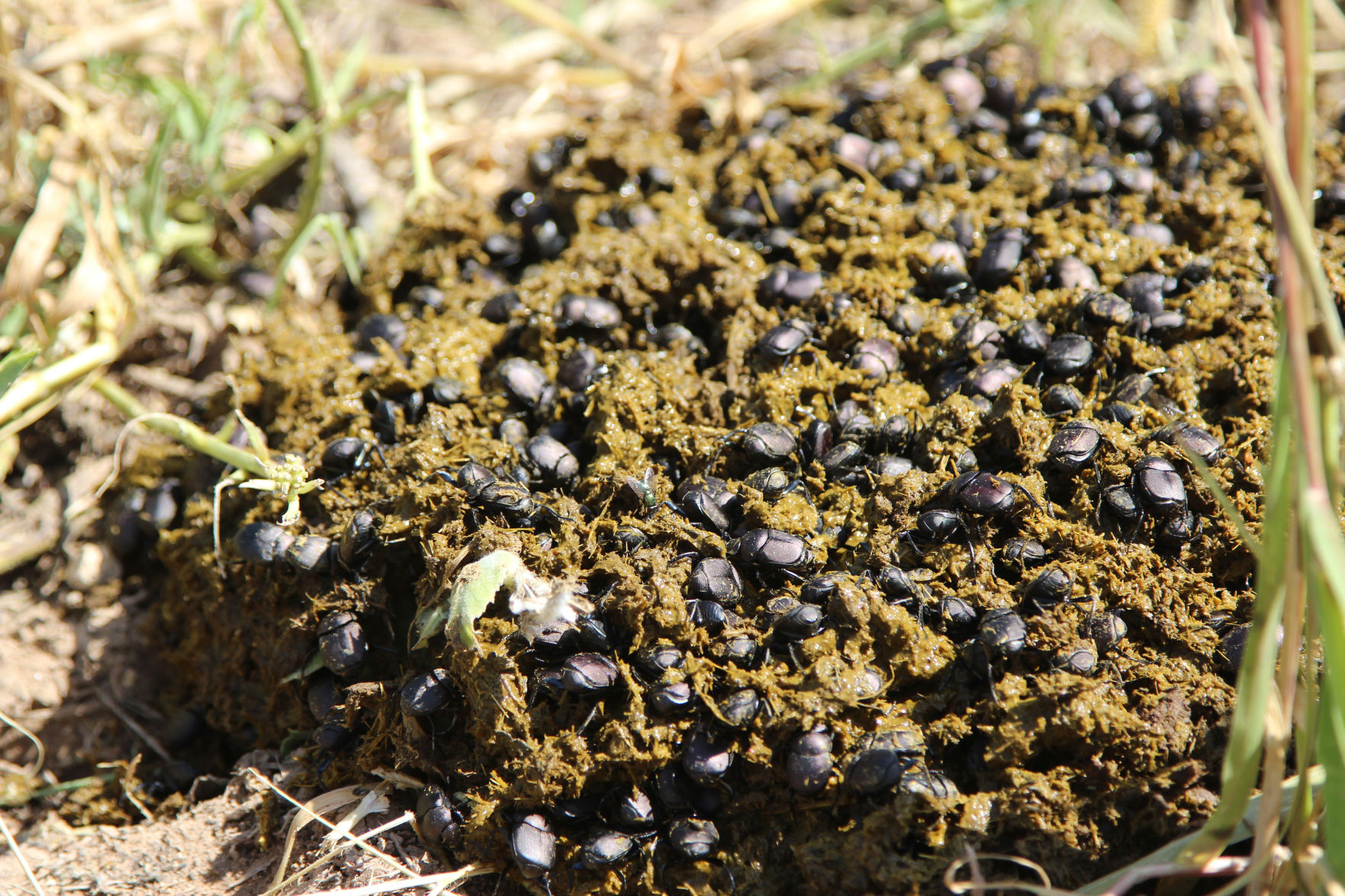Seeing dung beetles in a pasture is a good thing. Seeing them devouring a manure pile is even better.
During the July 31 No-Till on the Plains field day near Bucklin, Kansas, farmer Lance Feikert and Jimmy Emmons of Leedey, Oklahoma, found quite the community of beetles encouraging the health and wellness of Feikert’s pasture. Both Emmons and Feikert are on the board of directors for NTOP.
Emmons said the dung beetles are hard at work, boring down into the ground and moving the manure down into the soil. Eventually the beetles will lay their eggs in the soil. What’s the importance of the bugs?
“First of all it was nutrition,” Emmons said. “You’re putting manure in the soil where you need it. You’re also watering nutrients if it does rain.”
If something was planted in the area where the dung beetles are working the roots would have a better opportunity to go deep into the soil where they’ll find exactly what they’re looking for.
“They’re going to go least resistance where the nutrition is, where the water is,” Emmons said. “That’s really important.”
Feikert has cover crops planted where an old fence line was once located in his pasture and into the adjoining field in southern Ford County. He’s intending to graze the cattle on the cover crops and move the fence in 10-foot increments so his cattle can utilize the added forage from the cover crops. Emmons thinks it’s a good plan.
“As the following months come, he’s going to have nutrition in the ground,” Emmons said. “He’s going to be able to infiltrate water in the ground and he’s going to give his crop an excellent storage.”
It won’t take the dung beetles long to move the nutrients around, Emmons said, and he expects it to only take them a few hours to have the manure devoured and down in the soil. Feikert had been walking the area to see where the cattle had been, and what was going on, but had been having trouble finding any piles.
“As I was walking through I was trying to find the manure and I just couldn’t find any,” he said. “I saw the dung beetles that were in there, working at it and that’s why I’m not seeing it, and in this pasture it’s hard to find a dry pile. So I knew something was going on.”
Emmons cautions worming cattle in a situation like Feikert’s because it can be detrimental to the insects. There’s wormer types that won’t kill the beetle and he suggests using those if the livestock need dewormed.
Feikert is convinced of how important the beetles are to the pasture.
“Now if I go worm them and what am I missing out on?” Feikert said. “What kind of life am I missing out on?”
Emmons said there are many different types of dung beetles, and until you see how they move the manure—rolling it, burying it or burrowing, it’s hard to comprehend how much good they are doing.
“Until you see it working guys it’s hard to comprehend how much life that I’m standing on right here,” Emmons said. “With that we’re only seeing a small amount of life, and how important it is what they’re doing below the ground here for us.”
The pathways the beetles take are valuable to the health of the soil, and if tilled, all the work is gone.
“If you bring a tillage tool through here, you’ve got all these pathways and earthworms, and dung beetles—you destroyed all of that,” Emmons said. “So what do they have to do—they have to start over again. They’re creating our nutrients in the ground.”
Kylene Scott can be reached at 620-227-1804 or [email protected].




